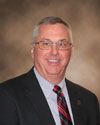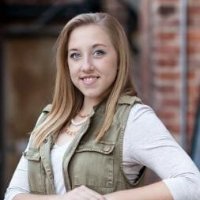“Hitting the books” was not part of Dr. Schauer’s accounting classes and students performed better
In Dr. Paul Schauer’s accounting courses, students don’t study material in a textbook as you would traditionally think. They also do not take on the role of “scribe,” furiously taking lecture notes during class. The reason? Dr. Schauer decided to teach accounting principles without using a textbook and turned his traditional classroom into an active learning classroom. His innovative teaching paid off with higher student performance and positive student comments.
 Dr. Schauer, who holds the Dr. William Schmeltz Teaching Professorship, is finishing his 19th year of teaching at BGSU and after participating in the University’s Innovative Teaching Community, he was motivated to try something new in both his undergraduate and graduate classes fall semester.
Dr. Schauer, who holds the Dr. William Schmeltz Teaching Professorship, is finishing his 19th year of teaching at BGSU and after participating in the University’s Innovative Teaching Community, he was motivated to try something new in both his undergraduate and graduate classes fall semester.
“For the first eighteen years, I presented concepts and problems associated with the concept,” according to Dr. Schauer. “I often provided students with problems to increase their understanding but did not require the students to complete them. In the current year, I implemented a new process that changed my students from a scribe into an apprentice.”
Dr. Schauer explains how his innovative teaching works. “I provide the students with a concept and a problem that utilizes that concept. They are required to complete the problem and when they have finished, we work it together as a class.”
He adds, “To ensure that students do the problem when assigned and not wait for the class presentation, I randomly collect problems for which they receive credit before the answer is presented. If they have completed the problem, they receive a score and if they did not, they get a zero. The correctness of the answer is not evaluated, only effort.”
The accounting professor assigns homework to further reinforce what was done in class, and he grades the homework for the correct answer. When it came to taking tests, Dr. Schauer states that a number of students admitted they really did not have to study much because they were comfortable with the material.
So how did this new teaching method affect student performance? According to Dr. Schauer, “The class average GPA for the introductory accounting course increased by .4 on a four point scale compared to other times I taught the class. One course evaluation indicated that the student was quite happy with this methodology since she previously failed the course and currently had a ‘B’ average.”
 Kari Tobak was in Dr. Schauer's introductory accounting class and gave high marks to her learning experience. “The education that I received from this accounting class was much greater than I had expected.”
Kari Tobak was in Dr. Schauer's introductory accounting class and gave high marks to her learning experience. “The education that I received from this accounting class was much greater than I had expected.”
She states that his teaching style of explaining the concept and then having students try it on their own was helpful. “Not being able to rely on a textbook reinforced the concept and truly made you understand the material, and then how to apply it.”
Tobak adds, “I thoroughly enjoyed the professor as someone who truly cared about the success of his students.”
The result was similar in his advanced financial accounting course in the Master of Accountancy program. The course GPA increased by .3 on a four point scale. Dr. Schauer explains, “The similarity of these two classes is that concepts build upon previous concepts, so concepts presented weeks ago provide a strong foundation for what is being presented today.”
The innovative teaching method was a little more challenging in his intermediate accounting class. This course has eight totally independent topics with as many as seven different concepts in a given topic, according to Dr. Schauer. He admits he had to make some adjustments during the semester to help students succeed.
“I learned as the class progressed that the students needed more reinforcement of the topics, especially in homework assignments, for me to ensure their success. I further modified the course, somewhere mid-semester, so I did not obtain the same impact as in the other two courses but the GPA did increase slightly.
Updated: 06/04/2018 11:45AM
